"Twice-cooked pork" (Hui Guo Rou) originated in the rural areas of Sichuan, China. In ancient times, it was known as "oil-fried pot." In Sichuan and Chongqing, it is a common household dish prepared by every family.
Twice-cooked pork holds a very important position in Sichuan cuisine and has long been considered the most important dish. In Chinese Sichuan restaurants, it is also the most frequently ordered dish by diners.
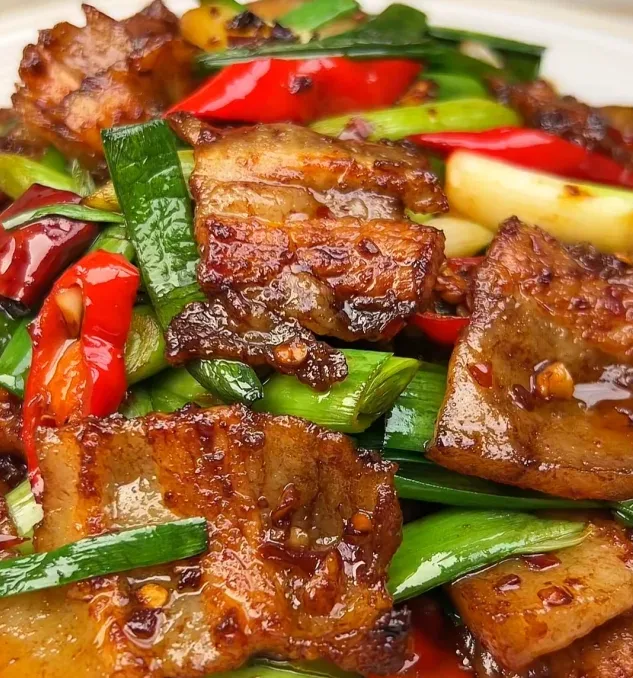
What is Twice-cooked pork?
The name "Hui Guo" literally means "returned to the pot," which means "cooked a second time." A more detailed explanation is to first boil and then stir-fry, putting it into the pot twice and cooking it twice.
The main ingredients of twice-cooked pork are pork hind leg (specifically the "second-cut" pork), green peppers, and garlic sprouts. Of course, the dish would not be complete without Pixian bean paste, and it would be even better with Yongchuan douchi (fermented black beans).
Twice-cooked pork has a unique flavor, a vibrant red color, and a rich taste without being greasy. It is a quintessential Sichuan comfort food that pairs perfectly with rice. Today, Anna will guide you step by step on how to cook this classic Sichuan home-style dish.
Ingredients:
- Skin-on pork belly (preferably the "second-cut") 500g
- Sichuan high-proof liquor (or cooking wine) 10g
- Scallions 2 stalks
- Ginger slices 15g
- Dried Sichuan peppercorns (to taste)
- Garlic sprouts 250g
- Small red chili peppers 2
- Dried chili peppers (to taste)
- Garlic 10g
- Pixian bean paste 30g
- Sweet bean sauce 10g
- Douchi (fermented black beans) 10g
- Cooking wine (to taste)
- Sugar (to taste)
- Chicken bouillon (to taste)
Step 1: Preparing the Pork
- First, scorch the pork skin. If you don't have a kitchen torch, you can heat a wok until it's hot and press the pork skin against the hot surface.
- Then, soak the pork in water for two minutes and use a cleaver to scrape the skin clean.
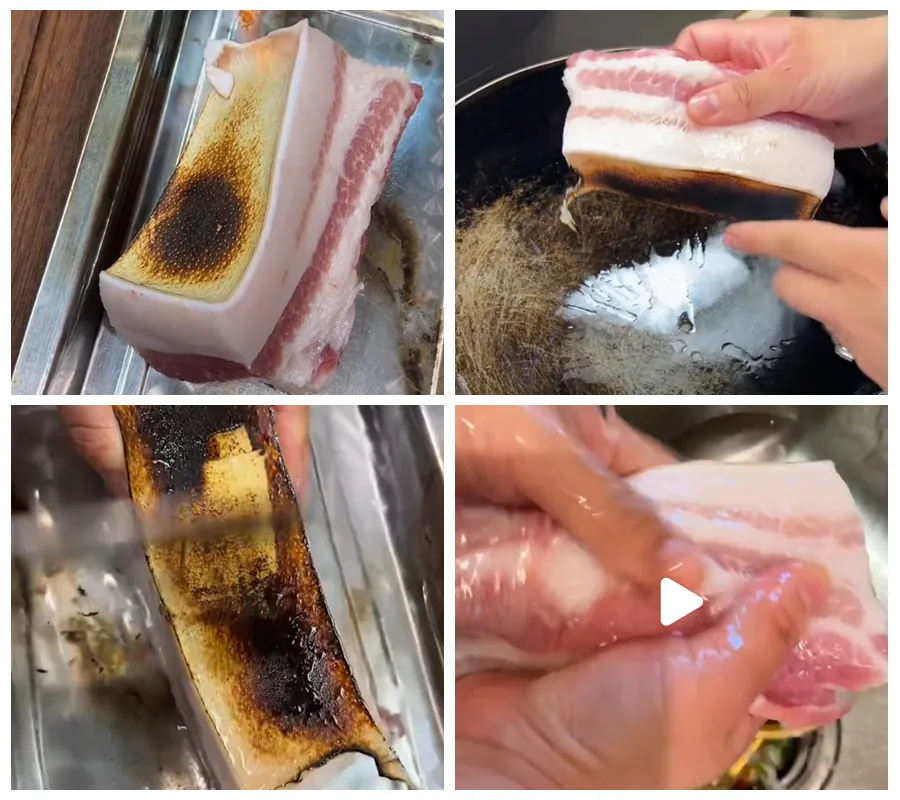
Step 2: Boiling the Pork
- Fill a pot halfway with cold water, add the pork, and pour in 10g of high-proof liquor (or cooking wine). Bring the water to a boil.
- After the water boils, skim off any foam from the surface. Add 4 ginger slices, 2 scallions, and about 10 dried Sichuan peppercorns. Reduce the heat to low and simmer for 20-25 minutes. While the pork is cooking, you can prepare the other ingredients.
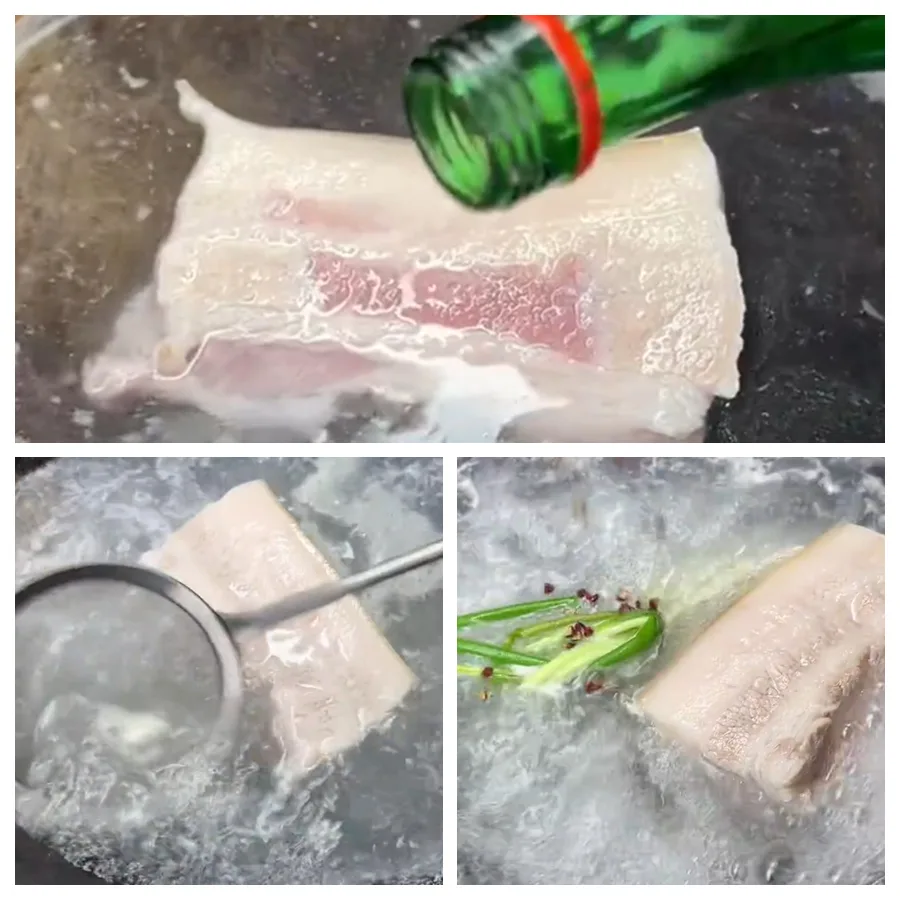
Step 3: Preparing the Vegetables and Seasonings
- First, chop the garlic sprouts. Cut the white root ends into slanted sections and the green leaves into segments, keeping them separate.
- Slice the 2 small red chili peppers into strips and set them aside with the chopped garlic.
- Prepare a piece of ginger and 2 cloves of garlic. Smash them with the side of your knife and chop them into a fine mince. Slice 2 dried chili peppers into sections and prepare about 10 dried Sichuan peppercorns. Put all these ingredients into a bowl and set aside.
- Get 2-3 spoonfuls of Pixian bean paste. Put the prepared douchi (fermented black beans) with it and set aside (you can skip the douchi if you don't have any).
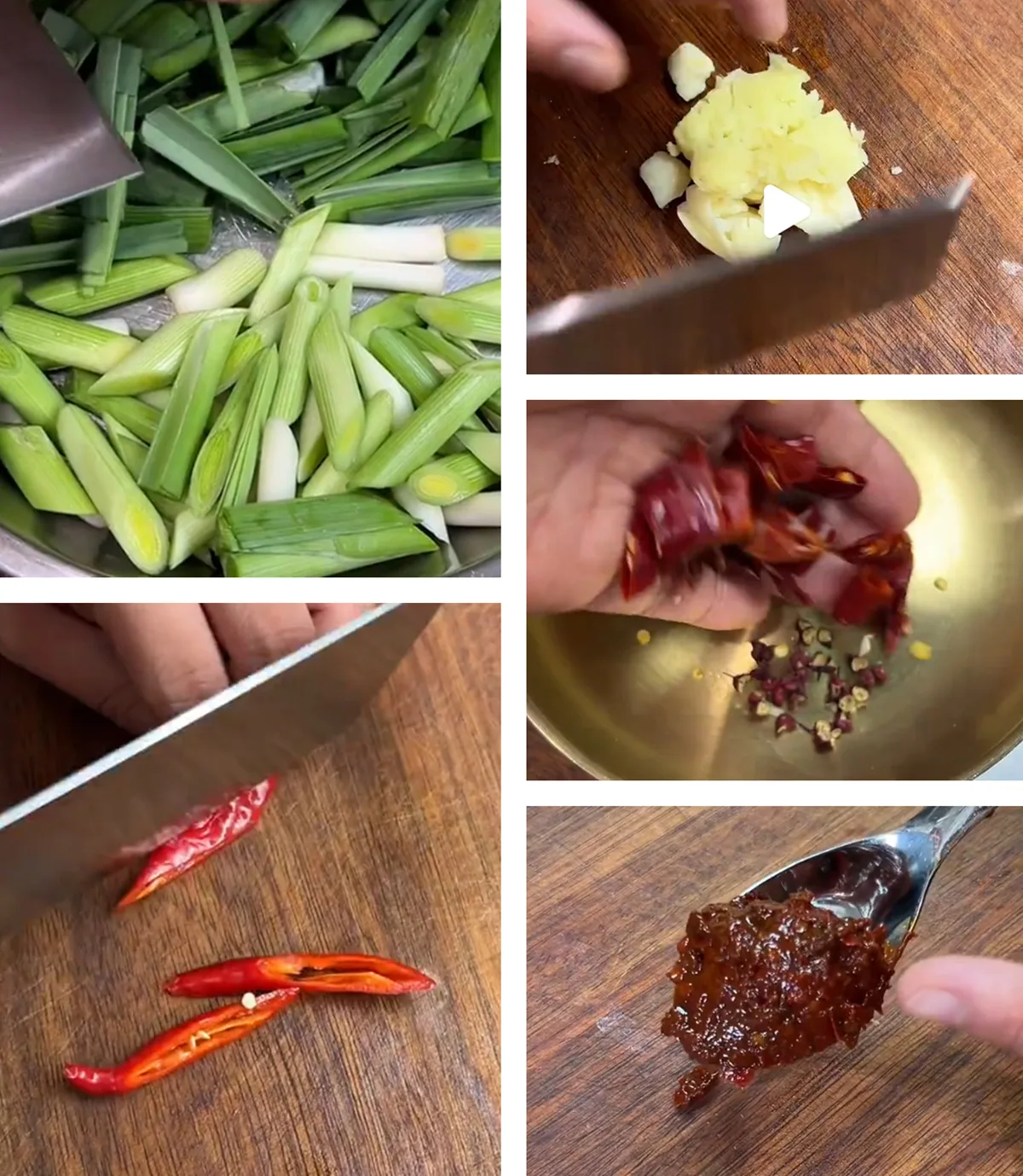
Step 4: Slicing the Pork
- Once the pork is cooked, take it out of the pot and let it cool until it is no longer hot to the touch.
- When slicing the pork, cut it one piece at a time. Don't rush or burn your hands. (Of course, if you're cooking for yourself and don't care much about the appearance, you can be a bit more casual with your cuts).
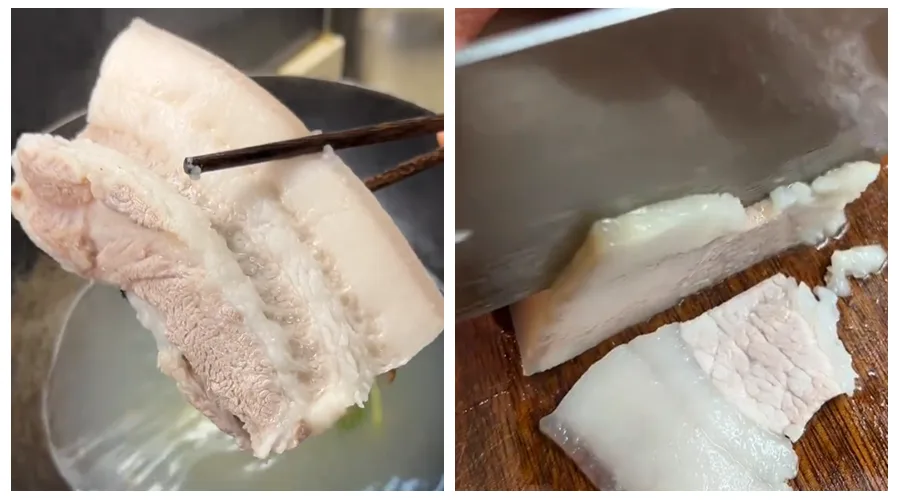
Step 5: Stir-frying the Pork
- Heat a wok and add a small amount of cooking oil. This helps the pork release its fat more easily.
- Add the sliced pork to the wok and turn the heat to low. Stir-fry the pork back and forth with a spatula until the fat begins to render. (A quick tip: don't stir-fry for too long, as the pork will become too dry and affect the texture. 2-3 minutes is usually enough, but you can adjust the time to your preference). If you find there is too much oil, you can scoop some out.
- Push the pork to one side of the wok and turn the heat to low. Add the dried chili peppers, Sichuan peppercorns, and douchi. Once they become fragrant, add the bean paste and continue to stir-fry over low heat. Add the minced ginger and garlic, then stir-fry everything together with the pork.
- Once the ginger and garlic are fragrant, add a splash of cooking wine along the side of the wok. Turn the heat to high and add the garlic sprout roots and small red chili peppers, stir-frying them quickly. This is the key step: remember to add 1-2 spoonfuls of sugar, but be careful not to add too much. (Adding sugar here enhances the flavor).
- After the sugar has dissolved and is evenly distributed, add the garlic sprout leaves and half a spoonful of chicken bouillon (chicken bouillon also enhances the flavor). Quickly stir-fry everything over high heat, then turn off the heat and serve.
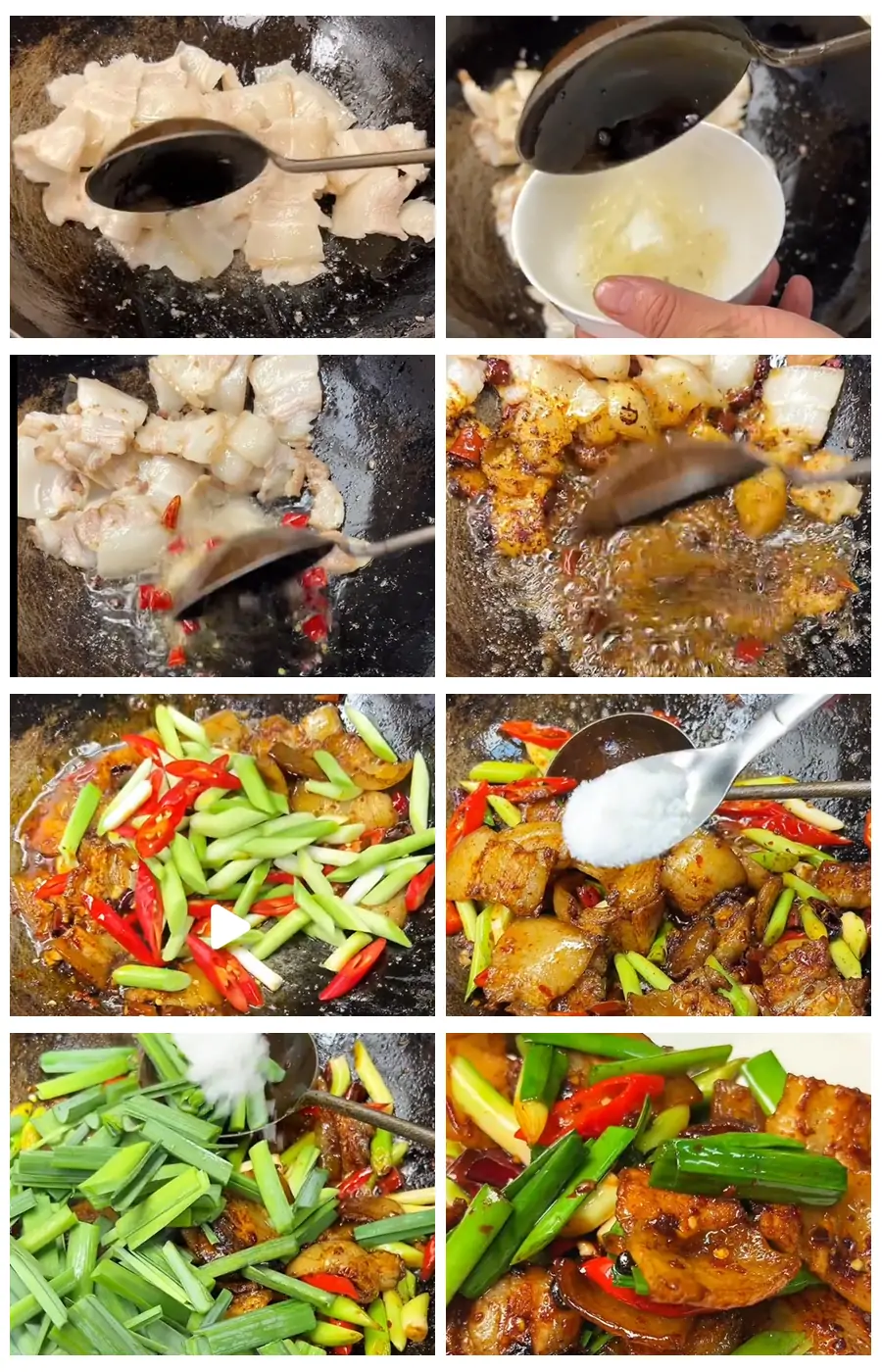
And there you have it—a plate of twice-cooked pork with a unique flavor, vibrant red color, rich taste without being greasy, and perfect for serving with rice.
Now that you've read this, have you learned how to make it?